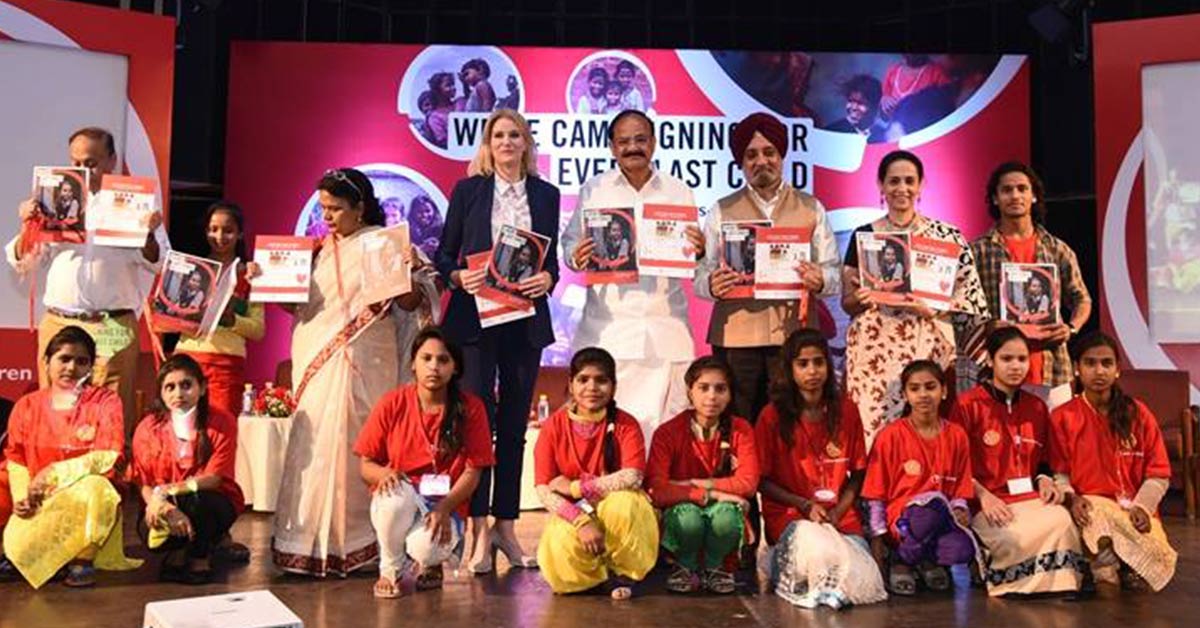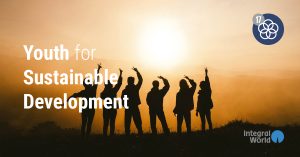Reaching Out to the Every Last Child in the World
In over 120 countries across the world, Save the Children has been making a difference in the lives of the children, as it firmly believes every child deserves a better future. Known for doing whatever it takes and for as long as it takes, Save the Children has been using its century-long experience and expertise to pioneer child-centred programmes to deliver child health, education and protection from harm. Being the first global movement for children, Save the Children has been using its vast network to vociferously raise the cause of children, especially the most vulnerable ones.
In 2015, even after the completion of the deadline to achieve the Millennium Development Goals, the performance in improving the goals related to children, curbing maternal and child mortality, education, improving health etc. continued to lag behind. Keeping this in mind, the Save the Children embarked upon the ambitious task of reaching out to Every Last Child in the 80 over countries in the next three years. This global priority campaign aimed at removing barriers resulting from poverty, discrimination and a lack of political voice, which leads to the exclusion of millions of children from basic healthcare, nutrition and education every year.
Specifically, the campaign attempted to ensure that every last child survives and learns. Over the next three years, through its network set out to provide 15 million of the world’s excluded children with the access to life-saving healthcare, prevent 600,000 child mortalities, and help in 50 million more children to receive education, thus substantially contributing towards achieving the 2030 global goals.
Globally, the strategic focus of the Every Last Child campaign were:
- Removing discriminatory barriers that stop children from surviving, learning and thriving.
- Removing financial barriers to quality essential services.
- Removing accountability barriers and empower excluded children and their communities.
Within this larger framework, implementing countries were free to set their own priorities based on the challenges faced. In India, Integral World was roped in by the Save The Children to conceptualise the communication strategy to maximize the impact.
Every Last Child Matters
Its time to put spotlight on the excluded and most marginalized children of the country so that they can survive, learn and thrive.
Not any one-size-fits-all approach:
Being a global campaign with focus on refugees and girls, one-size-fits-all approach wouldn’t have been successful as the campaign was being simultaneously launched on April 26, 2016 in over 80 countries. Hence there was the need to adapt the concept and theme to Indian context and still be a part of the global campaign.
India with its huge population, extreme inequality, social factors like patriarchy, and vast geography with multiple languages spoken, presented a unique challenge in terms of the conceptualization and implementation of the campaign. However, it was important to reach these excluded children because by reaching them will help in achieving Sustainable Development Goals by 2030. To overcome these challenges, it was decided to look at the India-specific campaign from three unique lenses urban poor, women and girls, socio-economic factors as ways in which children are being excluded and left behind in accessing their rights to survive, learn and be protected. Another unique challenge present was lack of identity cards among the most vulnerable, which hampered the access to public health and education institutions.
Box on the right side with highlighted text:
It was decided that, apart from advocating for creating a comprehensive priority framework for addressing issues related to street children, Save the Children India, as a part of this campaign, would focus on:
- Providing education, health and protection to two million most excluded and marginalised children.
- Mobilising 1 million people to catalyse change.
- Providing 500,000 street children with a legitimate identity as a citizen of the country, which will enable them access to their basic rights.
Giving face to the most excluded children
Given the challenges in front of us, early on we realized that for this campaign to reach and make an everlasting impact, it was crucial to communicate and promote it among the masses to help ensure that every last child gets access to quality healthcare and education to not only survive but thrive. Considering a large number of children and the barriers, some of which could be removed by the behavioral change, it was decided to adopt the human-centric approach for this campaign so that it directly and indirectly appeals to people much beyond what we had originally planned to target. Our approach of giving face to the nameless and most excluded people also helped us in encouraging the audience to stand for every last child and support Save the Children in reaching out on a wider scale.
To initiate the conversation around the issue, a series of national and international communications and advocacy activities were planned in order to create political space and public debate on the issue of exclusion. These activities included:
- Advocacy-led activities, with key government stakeholders, media and partners – including roundtables and policy-influential media coverage
- Mobilisation-led activities, prompting publics to take action and take notice, including a campaign launch action, and stunts
- Child-led activities, giving children a platform – including through media and advocacy activities
To reach out to the maximum people across the country, locally relevant excluded groups were first identified and then the campaign was launched at the central and state level together, across 15 locations, along with various face-to-face activities and events to sensitise public and other stakeholders.
Nationally, the Campaign was formally launched by Venkaiah Naidu the then Union Minister of Urban Development, Housing and Urban Poverty Alleviation and Parliamentary Affairs in the presence of Save the Children International’s CEO, Helle Thorning-Schmidt (former Prime Minister of Denmark), Stuti Kacker, Chairperson of the National Commission for the Protection of Child Rights NCPCR, Harpal Singh, Vice Chair, Save the Children International & Chair, Save the Children in India, representatives from the civil society and UN, and over 150 children from the slums of Delhi.
“This is a very important campaign and would like to congratulate Save the Children for working consistently with children. Time has come to imbibe our age-old values and ensure cities that are child-friendly. Anything good for our children is good for our entire society.”
Venkiah Naidu at the launch.
“Since India has the highest number of children in the world, improvement in their lives will have a huge impact for the entire world.”
Save the Children International’s CEO, Helle Thorning-Schmidt (former Prime Minister of Denmark) at the launch.
Much of the communications activities were rolled out in the weeks and months after the launch, to build and sustain the momentum of the campaign. This helped Save the Children in starting the public conversation on exclusion and in engaging the politicians in support of the cause.
The team at Integral World understood the brief and was able to translate it very creatively.
Pragya Vats, General Manager – Campaign, Save the Children
A photo exhibition was also organised to showcase all the problems faced by the excluded children along with a fact associated with it to highlight the magnitude of the issue. The objective of the exhibition was to multiple invisible facets of exclusion and marginalization in various contrasting backgrounds like ethnic and caste groups like dalits, rural and urban India, uneducated and educated section, children with various disabilities. From newborn and infant mortality to child-labour, and discrimination due to being a girl child or those who do not consider themselves in the binary of male and female, thus belong to lesbian, gay, bisexual, transgender, intersexual, and queer, all exclusions were displayed. The bold circular red stroke in the design of the exhibition gave a sense as if everyone is protected so that they can realize their true potential.
Over 2.3 million children touched
With solutions provided by the Every Last Child campaign with the help of Integral World, a massive improvement in child situation was noticed, resulting in long-term economic growth in India. During the project, Save the Children reached to over 2.3 million children through their programmatic interventions and reaffirmed thier commitment to not stop until every last child has an equal chance so that every child can reach his/her true potential in future.
During the three-year implementation period, Save the Children India succeeded in bringing a revolutionary change through this campaign. It helped in removing 500,000 children from streets of urban cities and provided them identity, which would enable them to access healthcare, education and protection. It also widened the public discourse around issues that affect the marginalised children and their communities. The senior Ministers of the Union government also publicly supported the campaign, which helped in widening the discourse. All this catalysed a positive change not in in the excluded communities, but also public, administration and legislative bodies at the state and centre levels.
However, the changes brought about by this behavioral change campaign shouldn’t be seen with a myopic vision. The impact is bound to be lasting as children are the future of any community. Only healthy, educated and informed children would lead to be a healthy productive workforce, and caring parents and citizens.
Keywords: Children; Children living on streets in India; education; health; child rights; street children in India; Child rights and SDGs; excluded, marginalized children, Every Last Child campaign, Ethnic Background, Rural Children, Urban Children, Uneducated, Children with Disabilities, Human Rights, Dalit, Newborn and infant mortality, Child-labour, Migrated Families, Girl child, LGBTIQ, GOAL 1: No Poverty, GOAL 2: Zero Hunger, GOAL 3: Good Health and Well-being, GOAL 4: Quality Education, GOAL 10: Reduced Inequality, Invisible children street children, advocacy campaign, Vulnerable children, #EveryLastChild, Rural India, Abandoned Children, Missing Identity, Excluded Children




